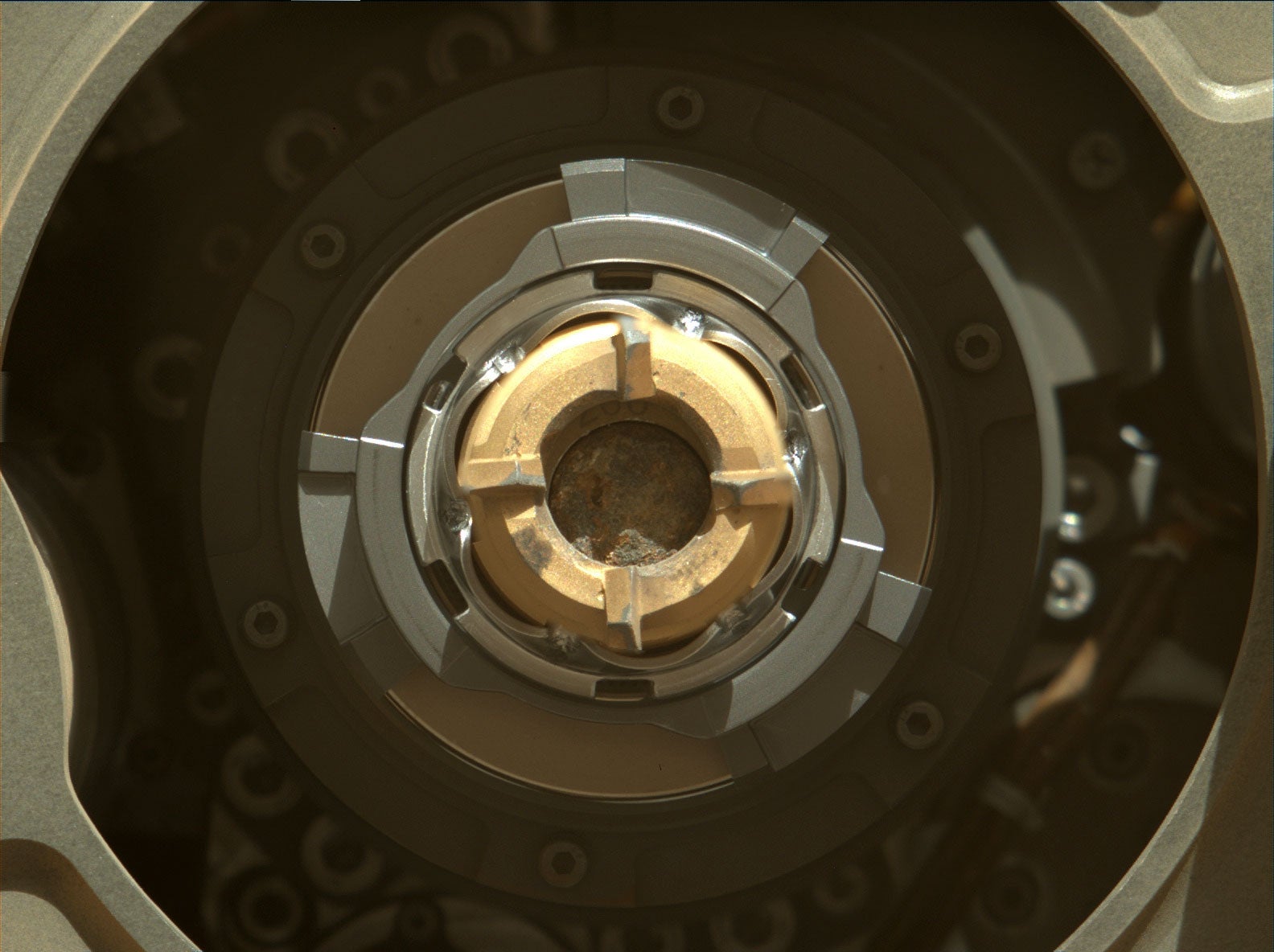Nasa’s latest Mars rover snags ‘perfect’ rock sample in historic mission after first drill came up empty
A previous sample collected by Perseverance had mysteriously gone missing

Nasa’s latest Mars rover Perseverance successfully collected its first “perfect” rock sample that will be returned to Earth for further study about signs of ancient microbial life on the Red Planet.
News of the collection comes after the rover’s first attempt to drill out a rock sample was unsuccessful last month after the sample mysteriously went missing.
The main objectives of Nasa’s 2020 Mars mission and Perseverance are to look for signs of ancient microbial life on the planet, characterise its geology and past climate and pave the way for human exploration of the Red Planet.
It is said to be the first mission to collect and cache Martian rock and regolith – broken rock and dust – and bring it back to Earth.
As part of this mission, the rover had earlier dug into the Martian surface last month and attempted to extract some soil, but when engineers checked what Perseverance had extracted, there was nothing there.
The space agency later discovered the soil was unusually soft and not strong enough to make a sample.
They said the fragments the rover attempted to extract were stuck in the hole and didn’t get inside the collection tube.
In its reattempt to extract pieces of the Red Planet, Nasa chose the rock “Rochette,” located on a ridge called Citadelle near the Jezero Crater on Mars, where the rover landed in February.
The crater in the Martian northern hemisphere is believed to have been home to a river delta billions of years ago, and the site is thought to potentially hold evidence of ancient life.
Nasa reasoned that the Citadelle ridge, capped with a layer of rock that is seemingly resistant to wind erosion, could endure the pressure of drilling.
“There are potentially older rocks in the ‘South Séítah’ region ahead of us, so having this younger sample can help us reconstruct the whole timeline of Jezero,” Vivian Sun, one of the mission’s scientists at NASA’s Jet Propulsion Laboratory in Southern California, had said in a statement last week.
In the new attempt, Nasa added an extra step for the rover in its sampling process.
Using a camera for confirming that the sample tube is filled, the rover paused for the team on Earth to review the image and double check if the snagged rock is present.
“We have a sample! I’ve never been more happy to see a hole in a rock,” Perseverance chief engineer, Adam Stelzner, noted in a tweet on Thursday.
The drilled out sample, “slightly thicker than a pencil,” is held in one of the 42 remaining titanium tubes aboard the rover and Nasa hopes to collect about 35 such samples from the Martian surface as part of the Perseverance mission.
It is hoped that a subsequent Nasa mission in coordination with the European Space Agency would send spacecraft to Mars to collect these sealed samples and return them to Earth for in-depth analysis.
Join our commenting forum
Join thought-provoking conversations, follow other Independent readers and see their replies
Comments
Bookmark popover
Removed from bookmarks